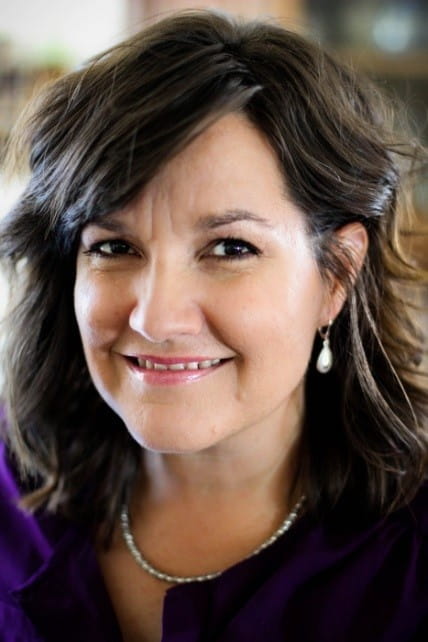How to Cultivate a Lifestyle of Learning

There are a few people whom I consider my homeschooling heroes. And I recently had the privilege of meeting a couple at the top of that list—Steve and Jane Lambert, longtime homeschoolers, frequent convention speakers, and the creators of the popular Five in a Row curriculum (FIAR). They began their homeschooling journey thirty years ago. (“We used to keep the kids indoors from eight a.m. to three p.m. and were investigated by social services,” remarks Steve.)
When I bought that little comb-bound manual to teach my first child back in 1994, little did I realize how it would affect my homeschooling approach, parenting, and even life. Some of our family’s best homeschool memories are from our Five in a Row years. Jane’s curriculum ignited within me a vision of what homeschooling and family could be, while Steve encouraged me via recorded conference talks and the FIAR message boards. I am forever grateful!
When I spoke with Steve, what struck me was their continued love for and commitment to homeschooling parents.
On Five in a Row and Homeschooling
Jen M.: Your curriculum is what I used when I first began this homeschooling journey and, I feel, taught me how to teach. What was the impetus behind starting Five in a Row?
Steve: We began homeschooling in 1981, and it was really my wife, Jane, who was doing it. The first two years, honestly, were hard. I’d come home and find her in her room crying and the girls in their rooms crying. And she said, “If this is going to be this hard, I don’t want to do this. I don’t want to be at war with my kids all day.”
So she began to pray. And she felt like God spoke to her, “Why don’t you just read books?” So she began to read picture books and literature with our girls, and out of that reading came lesson plans, and out of those lesson plans came a style of learning that worked for our family.
Friends began asking for homeschooling help, so Jane began to take some of her favorite books and write lesson plans late at night to give to her friends. And out of that came the first collection of stories that now have been used by one hundred thousand homeschooling families.
Jen M.: That is incredible. I have to show you something [I hold up my original copy of FIAR.] It’s my first copy of Five in a Row that I used with my now twenty-two-year-old!
Steve: Yes, that is from our first print run!
Jen M.: And I don’t even think you had other volumes yet. But we just fell in love with the method. I remember thinking, “They’d better hurry and come out with more by the time we finish this!”
Can you explain the methodology behind Five in a Row? You take lessons from picture books for five days’ running, which is where the name comes from.
Steve: In a typical school day, you have a little bit from every subject every day. We thought it would be interesting to take a different focal point or subject for each day. So by taking classic children’s literature and picture books, ranging from back in the 1930s to Caldecott winners of the past decade, we take a different emphasis each day. And this would be for content areas, not subject areas like phonics and math which require instruction and drilling each day. But it covers all the other areas: language arts, social studies, creative writing, poetry, art, nutrition, science, history…everything else you can think of.
Jen M.: And then some!
Steve: Yes, and for instance in creative writing or vocabulary, rather than having an arbitrary list, we’ll take the words and the writing style and technique that came up in the story we’re reading this week, and those are the areas we’ll study. For art, we’ll look at the particular style or palette that the illustrator used in the book, and that’ll become our art lesson. Each day peels back a little layer and gives them a deeper look at the material, and they tend to remember what they learn.
Jen M.: And it’s such a gentle way of learning. As I’m looking at some of the titles covered in Five in a Row, it brings back so many memories with my kids: The Story about Ping, Clown of God, Lentil, Madeline… The lessons were very short, and then we’d do our phonics and math worksheets, and we’d be done in an hour or two! And I remember thinking, There is no way this is enough!
Steve: That’s a traditional response, that it couldn’t be “enough.” One of the famous sayings is that education isn’t about filling a bucket, but lighting a fire. And the traditional educational method is bucket-filling. Right here in my smartphone is all the information in the world. You don’t need to memorize who the fourth President of the U.S. is; you can look it up and get a picture of his wife and his inaugural address. It’s now, what do we do with all this information? And so teaching children to think rather than purely memorize facts to regurgitate on a test draws them in to the learning experience. And the beauty of FIAR is that even though your formal time may be over in ninety minutes or less, things are still being discussed over the dinner table and at bedtime. It becomes a learning lifestyle, rather than just a classroom experience.
Jen M.: Since FIAR has been around so long, have there been any content changes? Also talk a little bit about what you’ve added to the FIAR line.
Steve: We haven’t really changed any of the content, because if it’s not broken, don’t fix it! Jane originally wrote nineteen lesson plans. That became Volume 1, and people like you clamored for more! So she wrote Volumes 2 and 3 and the Christian Character Bible Supplement, and the cookbook for that sensory experience. Our oldest daughter Becky wrote Beyond FIAR for ages eight to twelve, and later on we added Before Five in a Row for preschoolers, which is probably our most popular product. [Ed.note: These products, as well as other materials, can be found at fiveinarow.com]
Marriage and Family
Jen M.: Changing subjects a little bit. One of the questions I often get from homeschool moms is wanting advice for homeschool dads. I remember hearing you speak about coming to the end of the homeschool journey. Normally the teaching parent is the mother—can you speak to a mom as she faces the empty nest?
Steve: Empty nesting is difficult for any mom, but when you’re a homeschool mom…your hobby, your vocation, your last waking thought, your first waking thought—your identity really—is of being a homeschool mom. So we’ve encouraged dads to invest a few extra dollars and time into helping moms explore and develop some sort of ‘exit strategy’ for when homeschooling ends—whether it’s gardening, volunteering, working in a soup kitchen, or art classes. To not wait till the last child is out the door.
Jen M.: So for homeschool marriages where the wife is living/eating/breathing homeschooling, what is your advice for keeping the marriage strong?
Steve: Next to your relationship with the Lord, marriage comes first. It’s essential to keep that foundation strong, and that means some dedicated time together, time with your spouse. For dads, I say just take a couple of minutes at the end of the day and look your wife in the eyes and say, “Just tell me how your day has been.” And shut up and listen. She doesn’t need you to fix it. Just listen. And frankly, homeschooling can make marriages more difficult, not easier, because it adds a whole layer of complexity and usually living on one income.
The Comparison Trap
Jen M.: What are you seeing with young moms compared to years past?
Steve: Have you seen the variations of Pinterest “fails”? What it should have been vs. what it really turned out like? It can be tremendously overwhelming. And the blogging thing doesn’t necessarily help in this area either. Because people don’t usually blog about their failures, but about their wild successes. Well, that’s not an accurate picture of what life is like.
Moms can be overwhelmed by comparing to those ideals. We’ve seen an alarming increase in the homeschool ‘dropout rate’ because they think they’re not doing it right. And the truth is, any new skill takes time to master, and you’re just not going to become an expert teacher in six months or a year. You’re going to stumble along and after the second or third year, you’ll find your groove.
And due to the inherent efficiency of tutorial education, even if you’re bad at it, they’re probably going to be ok even if you’re just slightly consistent!
So I want to encourage moms—you may not feel like you measure up. You know what? It’s not a mistake, if God has stirred your heart to start this venture. Give it a couple years.
Jen M.: And I think most people are fine with having a bad day or week. But they don’t realize that sometimes you can have a bad month or a bad YEAR. And that’s life. And you can make up that time, if you have a long-term view.
Steve: Absolutely you can. For instance, if you find yourself in a difficult pregnancy and on bed rest for months, and all you can do is have your kids crawl in bed and read, that’s enough. If your husband has lost his job, and you’ve had to work part time, or you’ve had to move around the country…what your children learn during those times about how you handle adversity together as a family probably are more valuable lessons than if they had read six more chapters in a history textbook. Learning is taking place as your children watch you stretched by difficult seasons.
Raising Christian Kids
Jen M.: One of my favorite talks of yours is “Raising World Changers.” I love the message of it—talking about the pressure on Christian kids, and especially homeschooled Christian kids.
Steve: Some of the most popular talks at homeschool conventions and retreats are about helping your children change the world, that your teen is going to be the young man or woman who will change Hollywood into a community of righteous film production or Washington into a government center of morality. The reality is that kids have lots to navigate, even with relationships within their own families. And the truth is, much as we hate to hear it, kids don’t listen to much of what their parents say. But they watch pretty much everything that their parents do. And there are no guarantees and no formulas.
The Bible has lots of solid parenting wisdom for us, but the bottom line is that the best chance we have of raising kids who will change the world is to let them watch us live a more godly life—to treat our spouse with dignity and respect, to show maturity and wisdom in how we handle our finances, and to see how we have care and compassion as we outreach in our community. Children are watching, and if you do the right thing, they’ll remember that. So rather than telling them what to go do, model that behavior.
Jen M.: And admitting when you’re wrong and apologizing to your children. I think that’s huge as a parent.
Steve: Amen. And Jane and I have talked for years about letting your kids catch you in the reality of marriage—letting them see you hug and kiss, and also see you work through arguments and learn how to resolve conflict.
Jen M.: Do you have any final thoughts for our audience?
Steve: Bottom line, there simply is no formula for successful homeschooling. When we look at raising children, we want formulas. And the truth is, there’s no formula. What worked for your son may not work for your daughter; and what worked for your pastor’s child may not work for yours; what worked for your firstborn will probably not work for your middle child.
And so, in the end, homeschooling is a journey of faith. It’s an agreement between a parent and the God they serve. And they have to say, “God, I don’t have all the answers. But I’m counting on you to help steer our family to the tools, resources, and timing that we need so that my child can serve you with a whole heart.”
And our experience has been that God is faithful to do that. If God stirred your heart, the thing that you need to know is the one who invited you is faithful to get you to the other side.
© 2014 by Home Educating Family Association. All rights reserved. Used with permission. Originally published in 2014 Issue 2 of Home Educating Family Magazine, the publication with the most meaningful discussions taking place in the homeschooling community today. Visit hedua.com to read back issues and for more articles, product reviews, and media.

Publication date: August 8, 2014
Originally published August 08, 2014.





